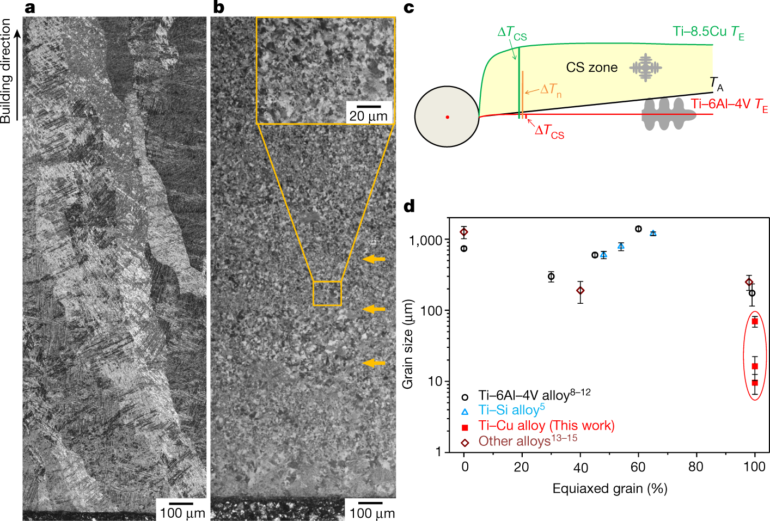A world-first study led by Monash University engineers has demonstrated how cutting-edge 3D-printing techniques can be used to produce an ultra strong commercial titanium alloy—a significant leap forward for the aerospace, space, defense, energy and biomedical industries.
Australian researchers, led by Professor Aijun Huang and Dr. Yuman Zhu from Monash University, used a 3D-printing method to manipulate a novel microstructure. In doing so, they achieved unprecedented mechanical performance.
This research, published in Nature Materials, was undertaken on commercially available alloys and can be applied immediately.
“Titanium alloys require complex casting and thermomechanical processing to achieve the high strengths required for some critical applications. We have discovered that additive manufacturing can exploit its unique manufacturing process to create ultra strong and thermally stable parts in commercial titanium alloys, which may be directly implemented in service,” Professor Huang says.
“After a simple post-heat treatment on a commercial titanium alloy, adequate elongation and tensile strengths over 1,600 MPa are achieved, the highest specific strength among all 3D printed metal to date. This work paves the way to fabricate structural materials with unique microstructures and excellent properties for broad applications.”
In the past decade, 3D-printing has led a new era in metal fabrication due to its design freedom that can fabricate almost any geometrical part.
Titanium alloys are presently the leading 3D-printed metal components for the aerospace industry. However, most commercially available titanium alloys made by 3D-printing do not have satisfactory properties for many structural applications, especially their inadequate strength at room and elevated temperatures under harsh service conditions.
“Our findings offer a completely new approach to precipitation strengthening in commercial alloys that can be utilized to produce real components with complex shape for load-bearing application. This application is still absent for any titanium alloys to date,” says Professor Huang.
“The 3D printing plus simple heat treatment also means the process cost is greatly reduced compared to other materials with similar strength.”
The findings in this work are expected to lead to fundamental insights into the principles of strengthening and dislocation engineering in the field of physical metallurgy.
More information:
Yuman Zhu et al, Ultrastrong nanotwinned titanium alloys through additive manufacturing, Nature Materials (2022). DOI: 10.1038/s41563-022-01359-2
Citation:
Engineers create the highest specific strength titanium alloy using 3D printing techniques (2022, September 19)



